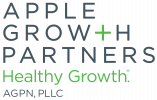By Alec Derrig | Associate, Tax
The day-to-day management of running a car wash is time-consuming, and owners may need help in studying trends or benchmark reports from the industry. The 2019 Professional Carwashing Industry Report from Professional Carwashing and Detailing Magazine reported comprehensive industry data from car wash owners and managers across the country. Our car wash team identified the top takeaways to consider in 2020.
Overall Industry Outlook
Continual increases in car counts and revenues have led to an entrepreneurial outlook on the industry. Over the past five years, the car care industry has grown by 3.6%, and the number of businesses has increased by 1.6%. More than half of car wash owners are considering either purchasing or launching additional car wash businesses.
Benchmarking is a critical technique for comparing your car wash to the rest of the industry. First, we will examine benchmarking data for all types of washes before drilling down on the three main types including, conveyor, in-bay automatics, and self-serve washes.
All Car Wash Types
Two-thirds of operators indicated seeing increased revenues in 2017, compared to 2016 despite increasing competition in their service areas. On the expense side, labor is the most significant cost factor accounting for nearly a quarter of all operating expenses. General business expenses (16%), chemicals (13%), rent (11%), and water (10%) are some of the other critical operating costs. Labor is not only the largest operating cost factor but also the most evolving. Speed and convenience are two of the essential adjectives in the car wash industry, which has led to an increase in the use of robotics and automation. Fifty-one percent of express exterior and flex-serve washes have only three or fewer employees as a result of the increased automation to stay competitive with rising minimum wages. Having an online presence and mastering social media usage is another growing challenge for car wash owners to maximize their business. Facebook is the number one social media platform, with over two-thirds of car wash operators utilizing the world’s biggest social network. However, only a little over half of all car washes have a website, and only about a third use eCommerce. This is a segment that will continue to grow and evolve just as the car wash industry does year after year.
Conveyor
Conveyor car washes have been a staple of the industry for decades, while also seeing the most evolution in the industry. This is because operators are shifting from the traditional full-service format to the express exterior conveyor wash. Conveyor washes are also the most popular system of washes, as 78% of owners reported having a fellow conveyor competitor within four miles. The convenience of a tunnel wash is something many customers seek, but free vacuums have proven to be a key added feature of conveyor washes. Two-thirds of conveyor washes provide free vacuums, which can be a key factor for a consumer deciding between multiple washes in the same area. Price positioning is a critical factor for all car wash owners. One-fifth of conveyor operators charge $5 or less for a basic wash, while over one-third charge $9 or more. Nearly half of operators price their most experience wash package at $21 or more. Owners have looked to increase profits by adding additional profit centers. Over half of conveyor washes now have detailing centers on-site, and about a third have lobby sales/extensive vending. New profit centers like this help transition a traditional car wash into a one-stop-shop for the consumer.
In-Bay Automatic (IBA)
The most significant difference between IBA and conveyor washes is the difference in their price positioning, with IBA’s being notably less expensive. About a third of IBA operators price their basic wash at $5 or less with, only 15% charging $9 or more. Furthermore, only a third of IBA’s charge $15 or more for their most thorough wash. On average, consumers will spend a couple of dollars per vacuum cycle, which is a feature that is free at most conveyor washes. Despite their convenience and affordable price points, IBA washes lack the amount of additional profit centers offered by conveyor washes. Less than a fifth of IBA washes provide detailing services for their customers on-site, and vending machines are few and far between. Each time consumers shift from do-it-yourself to professional car washing, the environment benefits as two-thirds less water is used. IBA operators specifically noted additional ways they are going green, including energy-efficient lighting, water reuse, energy-efficient dryers, etc.
Self-Serve
A typical self-serve car wash location has 5-6 bays, and a little over half of them also have an in-bay automatic wash on site. Self-serve washes appeal to the do-it-yourself consumers, and most bays offer a variety of services such as foaming brush, pre-soak, spray wax, and tire/engine cleaner. A start-up cycle that runs for about four and a half minutes is typically priced around $2.31, and additional cycles around $1.11. Vacuums are available at 100% of self-serve washes and are priced the same as the IBA washes. These affordable price points are the key that drives the do-it-yourself out of their driveway and into a self-serve wash. Managers typically operate self-serve washes off-site, which helps cut down operating costs. Having a quality surveillance system is critical without a physical presence, and about 83% of operators note having one in place.
Our experienced CPAs can help grow your car wash business and are up-to-date on the latest industry trends. Contact us today to accelerate your car wash.

